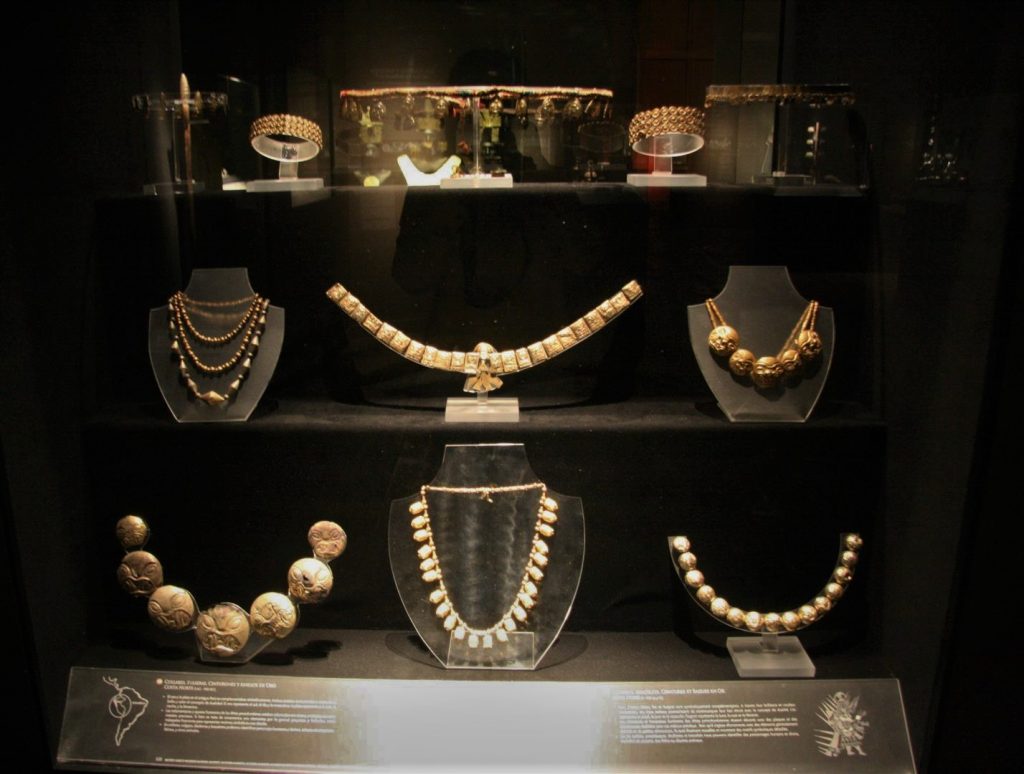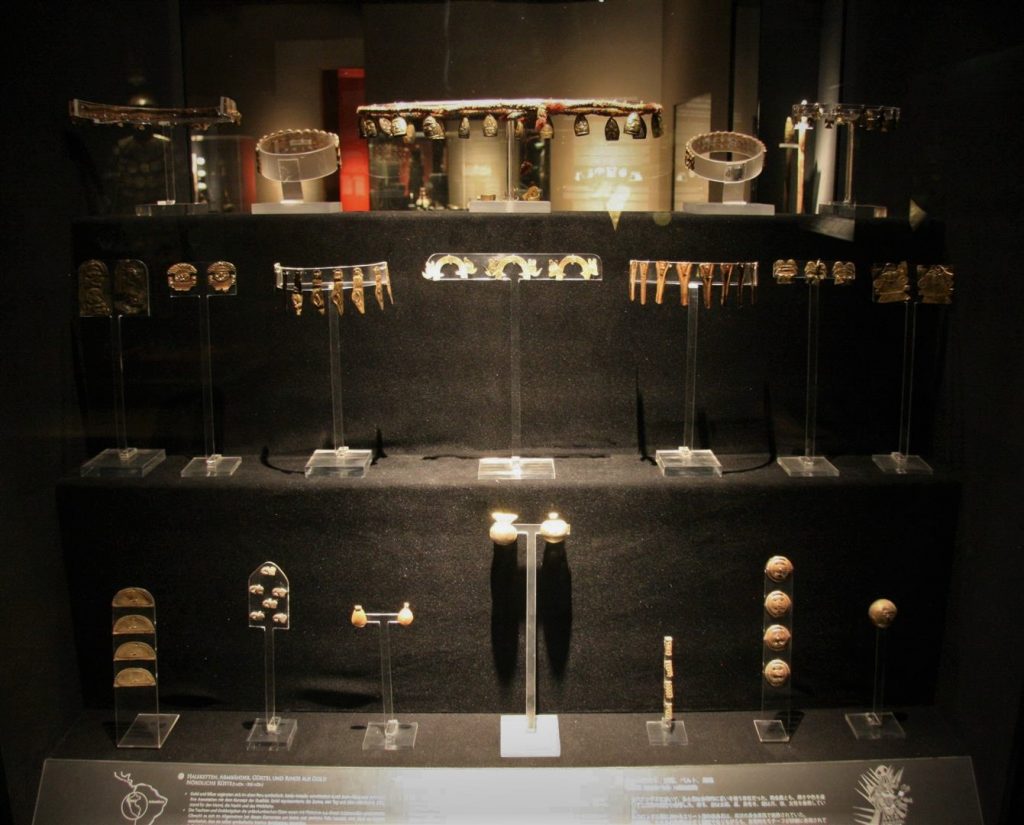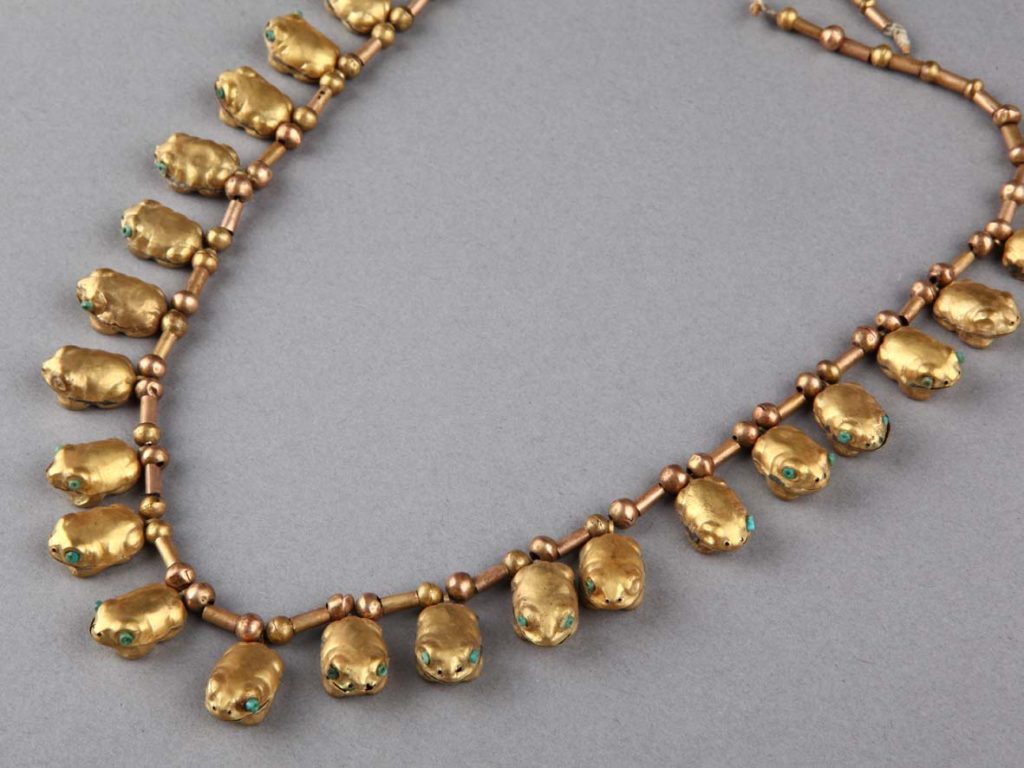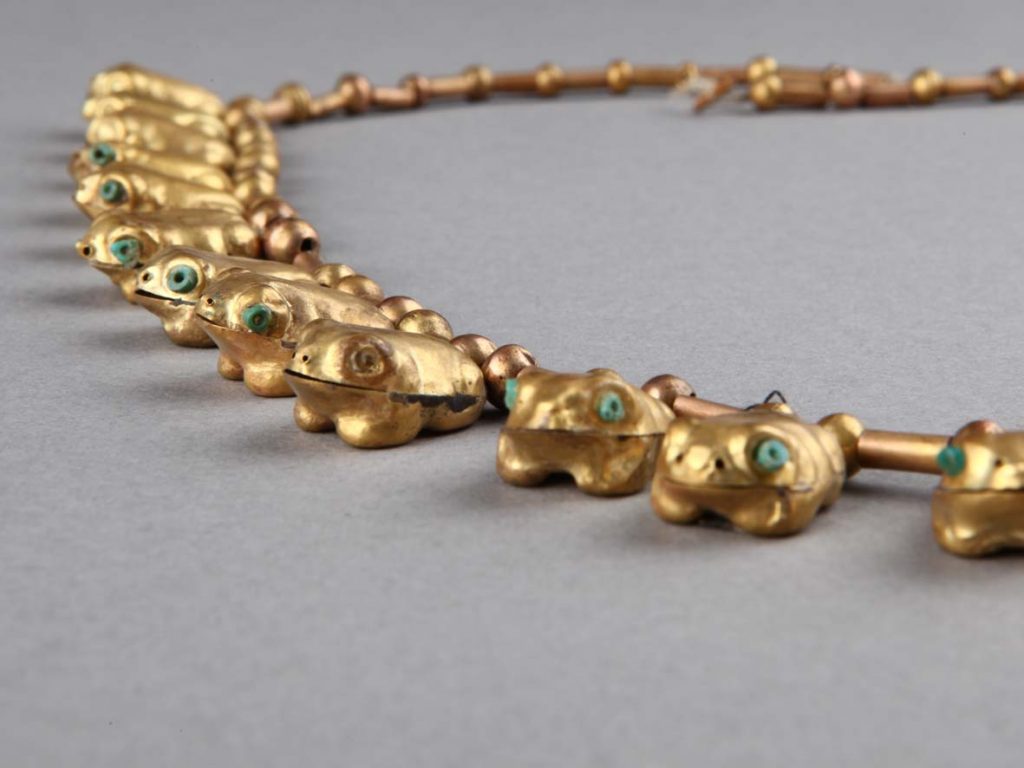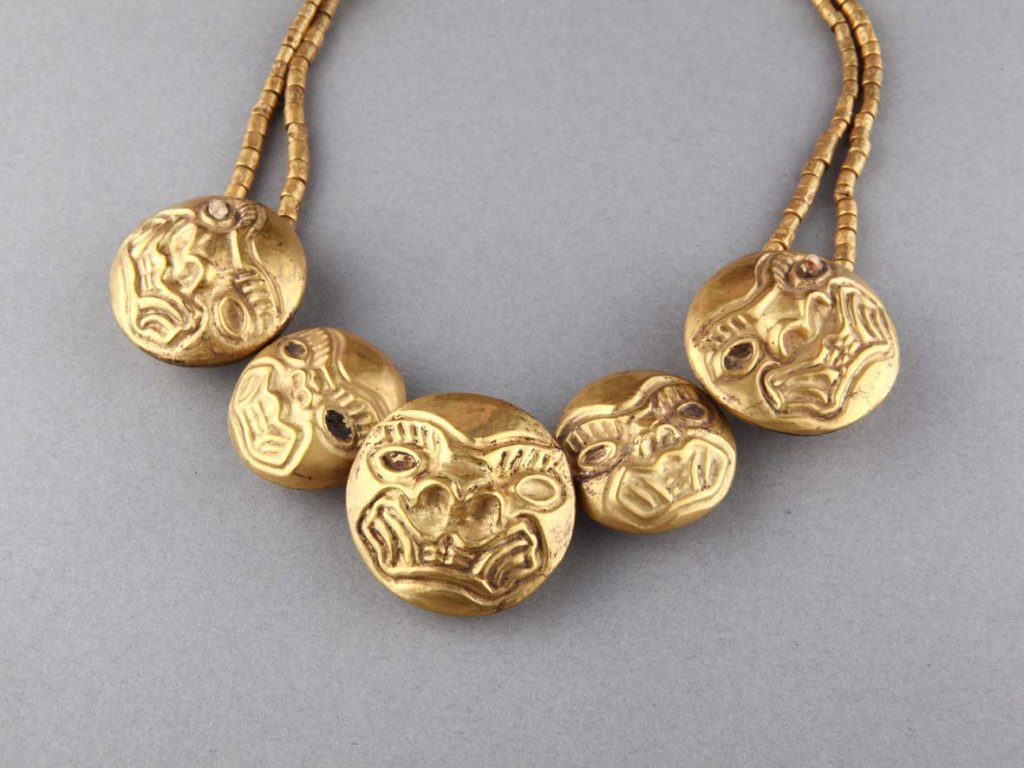Gold Necklaces, Bracelets, Belts and Rings
Room 11, Vitrine 133
Metal
Peruvian Northern Coast
1 AD – 1532 AD
ML100025-ML100039, ML100077, ML100083-ML100090, ML100095-ML100097, ML100127-ML100137, ML100146-ML100155, ML100166-ML100168, ML100180, ML100185, ML100192-ML100233, ML100562-ML100564, ML100814....show more
For ancient Peruvians, in symbolic terms gold and silver were complementary. Through their color and brightness both metals were associated with the concept of duality. Gold represented the sun, the day and all that was masculine, while silver represented the moon, the night and all that was considered feminine.
The clothing and funerary offerings of the pre-Columbian elite were decorated with plaques made from these precious metals. Although these pieces were invariably small and delicate, they were finely-worked to display symbolic elements in great detail.
In necklaces, flaps, diadems and bracelets we can identify figures both human and divine, as well as the heads of serpents, felines and other animals.
